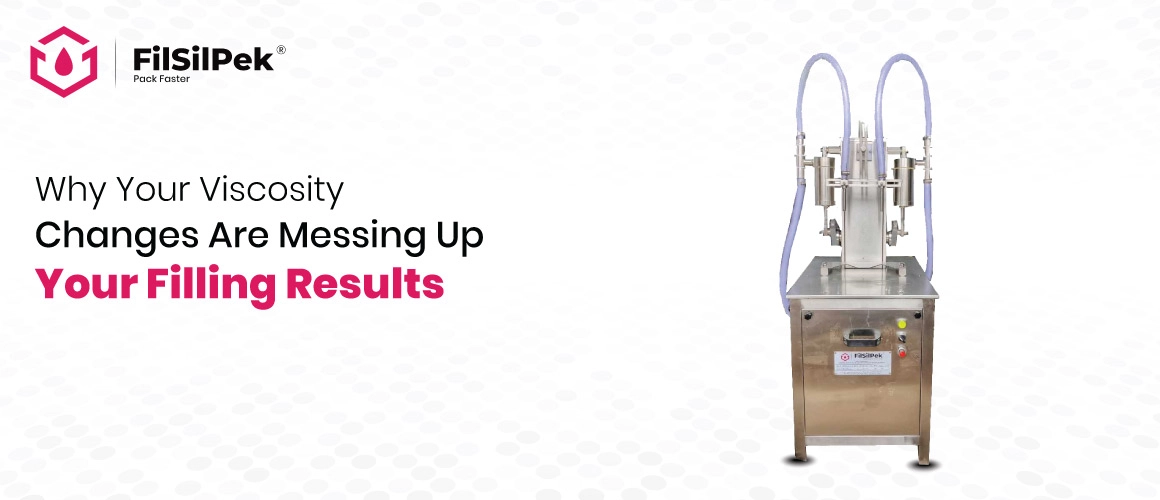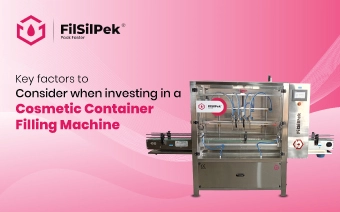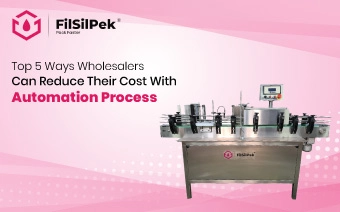Why your viscosity changes are messing up your filling results
If you run a business where product filling drives your daily output, you already know how tricky it gets to keep every bottle, pouch, or jar consistent. You set the right filling speed, calibrate the machine perfectly, and yet—somehow—the results differ from batch to batch. The volume changes, the flow feels uneven, and the product either foams too much or barely flow.
In most cases, the trouble starts where nobody’s looking—inside the product itself. Viscosity shifts are among the most overlooked yet damaging factors in filling operations. The product behaves differently every time, confusing even the most advanced fillers. And when that happens, the cost quietly builds in wasted material, downtime, and rework.
How does viscosity silently control your filling outcomes?
Think of viscosity as the language your product speaks to the filling machine. A slightly thicker or thinner consistency can completely change how the system responds. Every part—pump, valve, nozzle—depends on predictable product flow. When the viscosity changes, your entire calibration goes out of tune.
Take this scenario: your filling speed is set for a moderately viscous liquid. Suddenly, due to a temperature drop, the product thickens. Now, your filler pumps are harder, valves open longer, and the machine rhythm gets disturbed. The result? Underfilled containers, delayed batches, and a headache for your QA team.
In contrast, when the product turns thinner, the machine may overfill or cause excessive splashing. It’s not just a machine issue—it’s a coordination issue between product physics and equipment response.
Why does viscosity keep changing when everything else looks right?
Viscosity doesn’t stay constant because several small variables keep moving around. Some are environmental; others are operational—and together, they build unpredictability into your line.
Here’s what’s happening behind the scenes:
- Temperature drift – A small temperature shift can completely change flow behavior. A product that runs smoothly in the morning might behave like syrup by evening if the plant temperature fluctuates.
- Mixing variation – Uneven blending or settling between batches can create thicker or thinner zones. Even a minor delay in agitation can alter the flow characteristics.
- Shear influence – Many products thin out when under pressure (like creams or gels). The filler pump adds that pressure, temporarily reducing viscosity mid-filling.
- Material inconsistency – A slightly different lot of oil, resin, or thickener can produce a different viscosity curve—even if the formulation stays identical.
- Storage impact – Products that sit for too long tend to thicken or separate, meaning the first few fills never match the last ones in texture or flow.
These factors rarely occur in isolation; they compound silently until the machine operator starts noticing strange behavior on the line.
The domino effect of ignoring viscosity control
Here’s what often happens: production keeps running despite deviations. The team compensates manually—slows down the line, adjusts valves, and carries on. But each small workaround adds hidden losses.
You lose more product than you realise in overfills. Underfilled units at risk of rejection or repacking. Pumps struggle to maintain consistent flow, increasing mechanical wear. And then there’s a wasted time on cleaning, recalibration, and operator intervention.
In short, ignoring viscosity control isn’t just a quality issue—it’s an efficient trap. It eats into yield, throughput, and maintenance budgets while quietly eroding brand reputation through inconsistent results.
Practical ways to stabilise viscosity before it hits your filler
Let’s be honest—no manufacturer can eliminate viscosity variations completely. The smart move is to control them early and minimise their influence before the product reaches the filling head.
Here are a few ways industry leaders are handling it:
- Keep temperature constant: Use jacketed tanks, inline heaters, or cooling loops to maintain consistent product temperature. Even a 2–3°C variation can change viscosity drastically.
- Pre-filling circulation: Circulate the product just before filling to break settling patterns and stabilise texture.
- Viscosity sensors: Install inline viscosity meters to monitor changes and feed data directly to PLCs. This enables instant parameter adjustments.
- Controlled mixing cycles: Fix and record mixing speeds and durations for every batch to avoid uneven blending.
- Batch data tracking: Record viscosity readings across batches. Over time, this helps you see seasonal or formulation-driven patterns.
Each of these steps keeps your filler working with predictability instead of surprise.
What Filsilpek’s smart automation bring to the table?
Older filling systems relied heavily on manual corrections. But with advanced automation, machines now react to viscosity changes in real time. They can “feel” the resistance in flow and adjust pressure or valve timing instantly—without needing operator input.
Filsilpek’s fully automatic viscous-liquid filling machine is engineered specifically for products whose flow behavior isn’t constant. With multi-head piston filling, recipe-based control, and full stainless-steel build, it adjusts to changes in product thickness and keeps your fill levels consistent—without manual guesswork. Whether you’re handling sauces, gels, creams, or adhesives, this machine helps you turn variability into stability.
- Seamless throughput across viscosities
As a fully automatic machine, the system handles container feeding, filling, and discharge with minimal operator intervention. That means when your product viscosity shifts (for instance, getting thicker due to temperature drop), the line keeps moving. Piston-type fill mechanisms plus automated dosing ensure you don’t lag behind. - Recipe memory and multi-head capability
Filsilpek’s automatic models support multi-head filling and are built for rapid change-over. You can store product profiles (for different viscosities, container sizes, fill volumes) so that when you switch from a thin sauce to a thick gel, the machine is ready without lengthy manual set-ups. - Hygienic, stainless-steel construction
The machine is built in stainless steel (SS304/316 for contact parts) with a design suitable for viscous media requiring jacketed hoppers, stirrers, or heated zones. If your product thickens in the hopper, the integrated design keeps consistency before filling. - Minimal waste and higher yield
Every container get the correct dosage because the system is calibrated for your viscosity range. That means fewer underfilled or overfilled units. With fully automatic operation, the margin for manual error drops—especially when viscosity drift creeps in. - Better data, better control
Since it’s automatic, the machine likely records cycle counts, fill weights, deviation trends. You get visibility into how viscosity changes correlate with fill accuracy and waste—information your plant manager or head of operations will value.
Final note
Viscosity changes might seem minor, but in reality, they decide how efficiently your filling line performs. When every batch behaves differently, your production team ends up chasing adjustments instead of meeting targets. Stabilising viscosity isn’t just about maintaining product texture — it’s about regaining control over speed, accuracy, and quality.
With the right automation in place, these challenges don’t stand a chance. Modern systems like Filsilpek’s fully automatic viscous filling machines adapt to variations on the go, ensuring that every fill stays consistent no matter how your product changes. That means less downtime, fewer rejects, and smoother, more predictable output.
Ready to get consistent filling for every batch? – Reach out to [email protected]
Key factors to consider when investing in a cosmetic container filling machine
Choosing the right filling machine for cosmetic products…
Overcoming challenges in multi-product liquid packaging lines
Managing a multi-product liquid packaging line is a complex task for…
Top 5 Ways Wholesalers can reduce their cost with automation process
Look if you’re a wholesaler still filling bottles or slapping labels by hand….



